When one thinks of Northern Ireland and Ireland, images of picturesque landscapes and lively cities may come to mind, but beneath the surface lies a complex tapestry of political, cultural, economic, and geographic distinctions. The Emerald Isle is renowned for its natural beauty and cultural richness, making it a unique and captivating destination. This comprehensive guide on “northern ireland vs ireland” will provide a detailed understanding of the two territories, their intertwined relationship, and what sets them apart. We will explore the key differences that define each region’s identity and governance.
Introduction to the Island
The island of Ireland is unique in that it is home to two separate countries: Northern Ireland and the Republic of Ireland. Although they share the same island and a rich, intertwined history, these two regions have developed distinct identities, governments, and international affiliations. Northern Ireland remains part of the United Kingdom, with its political landscape shaped by the British government, especially during pivotal moments such as the Irish War and the creation of the Northern Ireland Assembly. In contrast, the Republic of Ireland is a fully independent, sovereign nation with its own national parliament and membership in the European Union. The division of the island into two separate countries is a defining feature of Irish history, influencing everything from politics to daily life. Understanding the evolution of Ireland and the Republic, and how their paths diverged, is essential for anyone seeking to grasp the complexities of this remarkable island.
Key Takeaways
- Political, cultural and economic differences between Northern Ireland and the Republic of Ireland are informed by history, language variations, religion distinctions, currency usage and trade relations.
- Geographic features such as land area and population density differ, with Belfast being the capital of Northern Ireland while Dublin is that for Southern Ireland.
- Travel considerations include border crossings facilitated by Common Travel Area but potentially affected by Brexit plus transportation discrepancies in road signs etc..
- The island is home to two nations, each with its own distinct cultural, religious, and political identity.
Understanding the Political Divide
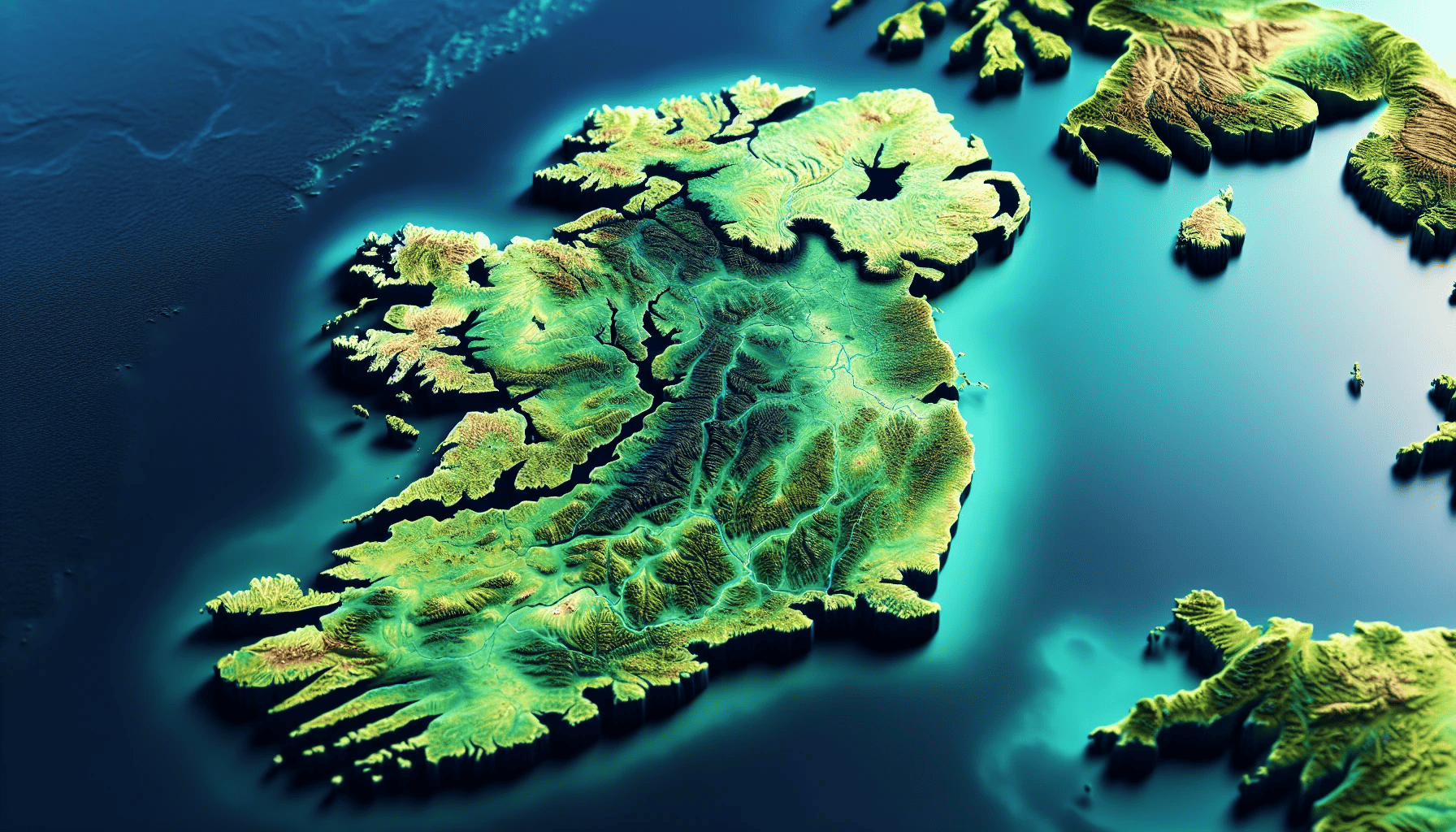
The differing political landscapes of Northern Ireland and Ireland significantly distinguish the two territories. While both are located on the same island, they possess distinct political systems, affiliations, and historical contexts that have shaped their development and identities over time.
Northern Ireland operates as a devolved government within the United Kingdom, with its own legislative assembly and executive authority. On the other hand, Ireland is a sovereign country, often referred to as independent Ireland, and is a parliamentary constitutional republic, known as the Irish Republic, with a president as the head of state and a prime minister as the head of government. While the current political landscape is divided, the concept of a united Ireland remains a topic of discussion.
Historically, the division of the island was preceded by proposals for separate home rule territories in the north and south, which set the stage for the eventual partition.
The political landscape of Northern Ireland has been shaped by a long history of British control, with England playing a central role in the governance, laws, and cultural divisions that have influenced the region’s identity and its relationship with the rest of Ireland.
Devolved Government in Northern Ireland
In Northern Ireland, the devolved government structure includes the Northern Ireland Assembly, responsible for making decisions on devolved matters such as health, education, and transportation. The assembly governs the northern counties, a region marked by distinct political and religious divisions, historical conflicts, and ongoing border issues.
The legislative assembly, established in 1998 according to the Belfast (Good Friday) Agreement, was designed to facilitate power-sharing between unionists and nationalists who sought an independent Irish Republic, following years of conflict involving the British Army. Within the UK context, Northern Ireland is often referred to as the six counties, emphasizing its regional and political boundaries. This was one of the ways the British government attempted to address the situation, drawing from the historical example of the Irish Parliamentary Party. The assembly convenes at the Parliament Buildings in Belfast, commonly known as ‘Stormont’.
The executive authority in Northern Ireland holds powers related to devolved government, including the formation of the Northern Ireland Executive, which comprises the First Minister, deputy First Minister, and departmental ministers. The specific powers held by the executive authority are outlined in the Government of Ireland Act 1920 and subsequent legislation.
Parliamentary Constitutional Republic in Ireland
Ireland, as a parliamentary constitutional republic, has a president serving as Ireland’s head of state and a prime minister as the head of government. The president’s role and responsibilities are outlined in the Constitution of Ireland, with powers including the right to refer bills to the Supreme Court for a determination of their constitutionality.
Michael D. Higgins, the current President of Ireland, represents the interests of the Irish people and addresses issues related to Northern Ireland’s status. With the establishment of the Irish Free State in 1922 and Ireland declaring itself a republic in 1949, Irish republicans chose not to recognize the British monarch, thus not remaining in the British Commonwealth and further differentiating itself from Northern Ireland.
Over time, Irish politics have evolved significantly, reflecting changes in governance, national identity, and the relationship between Northern Ireland and the Republic of Ireland.
Cultural Contrasts
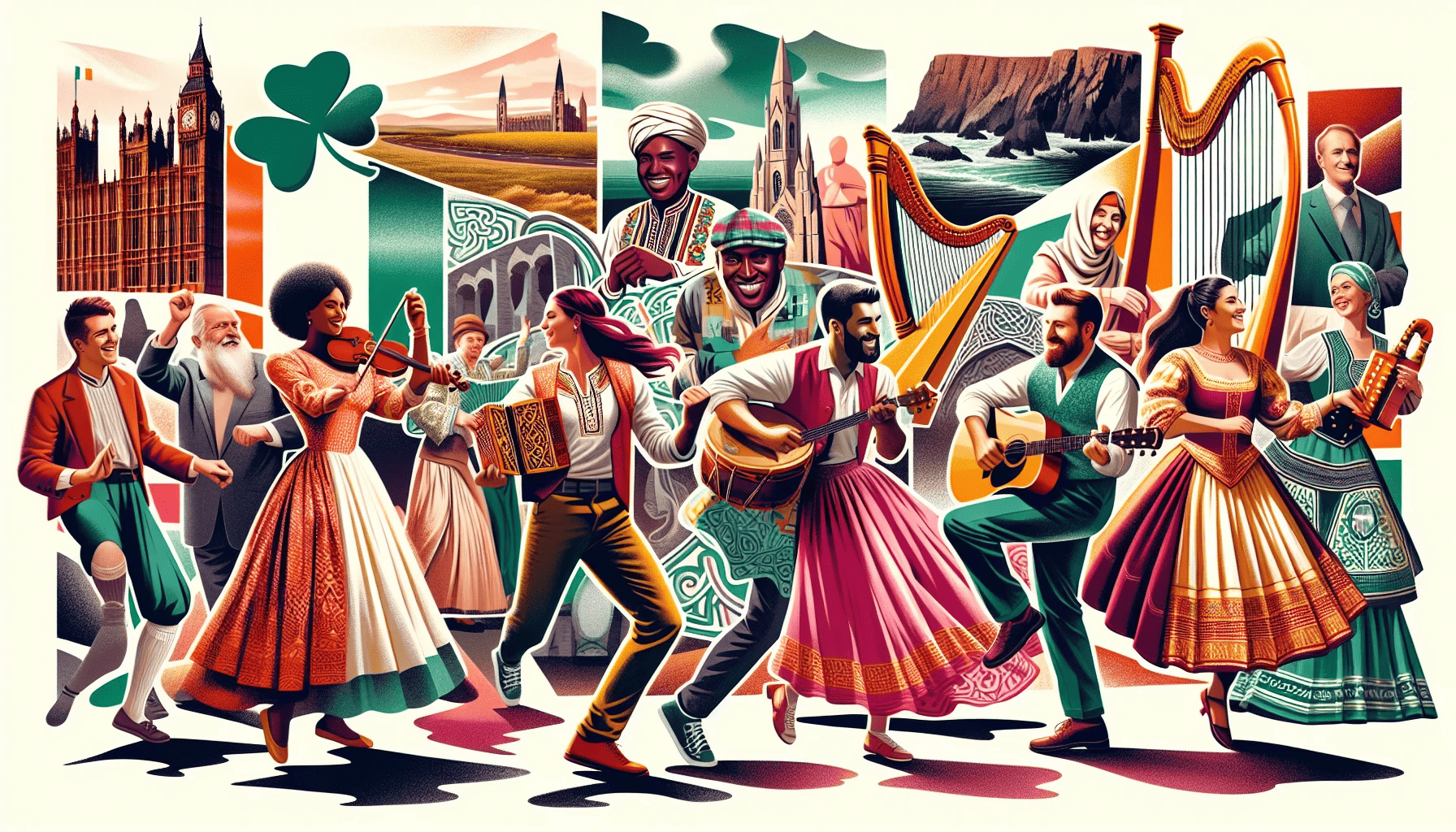
Cultural contrasts between Northern Ireland and Ireland are evident in language and religious differences, which play a significant role in the identities and experiences of their populations. The subsequent sections will highlight the variations in language and religion between the two territories.
Language Variations
Although English is the predominant language in both territories, there are notable linguistic differences. In Northern Ireland, Irish and Ulster Scots are also spoken, whereas in Ireland, Irish (Gaelic) is a national and first official language.
The Irish language, deeply rooted in Irish history, holds considerable cultural and symbolic significance in both Northern Ireland and Ireland. In Northern Ireland, there has been a resurgence of the language through the establishment of Irish language schools and increased interest in preserving and promoting the language.
In the Republic of Ireland, Irish is officially recognized as the national language and is an integral part of the country’s cultural identity.
Road signage further reflects these linguistic differences: in the Republic of Ireland, road signs are bilingual in Irish and English, while in Northern Ireland, road signage remains exclusively in English due to different language policies.
Religious Differences
Religion plays a significant role in the culture and politics of both territories. The predominant religions in Northern Ireland are Catholicism, Protestantism (including Presbyterianism and the Church of Ireland), and Methodism. In Ireland, the predominant religion is Catholicism.
The historical context of religious affiliations in both regions has influenced their political landscapes and identities. Northern Ireland’s predominantly Protestant population has traditionally leaned towards unionism, whereas the Republic of Ireland’s majority Catholic population has historically sought greater autonomy and independence.
Cultural Exchange
In recent years, cultural exchange between Northern Ireland and the Republic of Ireland has flourished, reflecting a growing spirit of cooperation and shared heritage. Artists, musicians, and writers from both sides of the border frequently collaborate, enriching the cultural landscape of the whole island. The Irish language, recognized as an official language in the Republic of Ireland and increasingly promoted in Northern Ireland, serves as a bridge connecting communities and celebrating a common heritage. The Good Friday Agreement has played a crucial role in fostering this cross-border exchange, helping to ease historical tensions and encourage dialogue. Despite these positive developments, differences in identity remain, particularly between Irish republicans and those who identify with the United Kingdom. Symbols such as the Irish tricolour flag and the Union Jack continue to represent the distinct national identities of the two countries, underscoring the ongoing journey toward mutual understanding and respect between Ireland and the Republic.
Economic Factors
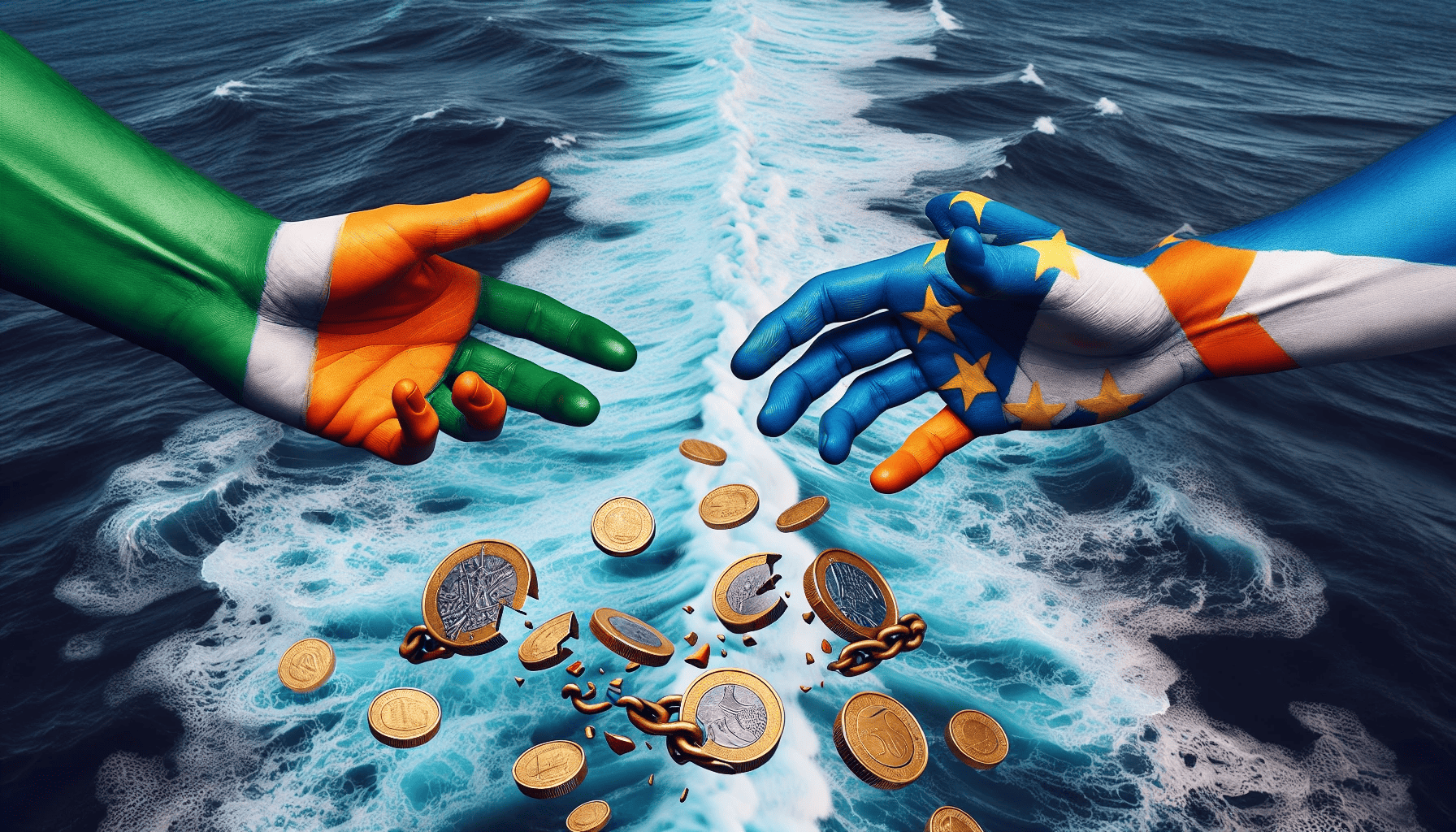
Northern Ireland and Ireland possess distinct economic factors, such as currency distinctions and the impact of Brexit on trade relations, which contribute to Northern Ireland’s status as a unique region.
In the following subsections, we will explore these differences in more detail.
Currency Distinctions
Ireland, also known as Southern Ireland, uses the Euro as its currency, while Northern Ireland, being a part of Great Britain, uses the Pound Sterling. The history of the Pound Sterling in Northern Ireland is closely intertwined with its status as a British territory. Conversely, Ireland adopted the Euro upon joining the euro area in 1999, as one of the first 11 countries to do so.
This currency distinction has implications for trade and investment between the two regions, affecting pricing, exchange rates, and financial transactions. Moreover, the currency distinction reflects the broader political and constitutional differences between Northern Ireland and Ireland, which can impede economic cooperation and integration between the two regions.
Trade Relations and Brexit
Brexit has created uncertainty regarding trade relations between Northern Ireland and Ireland, as well as the potential for a hard border. The impact of the UK leaving the EU (Brexit) has raised significant concerns about trade disruptions and border issues between the two regions. Prior to Brexit, the two regions enjoyed unimpeded trade as part of the European Union’s single market and customs union, experiencing no tariffs or barriers within the European Union.
However, the Northern Ireland Protocol, part of the Brexit agreement, seeks to prevent a hard border by maintaining Northern Ireland’s alignment with some EU regulations. Despite this, there have been ongoing disagreements between the UK and the EU regarding the implementation of the protocol, leaving an air of uncertainty for the future of trade relations between Northern Ireland and Ireland.
Economic Cooperation
Economic cooperation between Northern Ireland and the Republic of Ireland has become increasingly important, with trade and investment flowing more freely across the border than ever before. The Republic of Ireland’s membership in the European Union has opened up significant opportunities for economic growth and collaboration, while Northern Ireland’s position within the United Kingdom has introduced unique challenges, especially in the wake of Brexit. The British government’s decision to leave the European Union raised concerns about the possibility of a hard border, which could disrupt the open border that has been vital for commerce and daily life. Nevertheless, both regions are committed to maintaining strong economic ties, as seen in the implementation of the Northern Ireland Protocol and ongoing efforts to facilitate cooperation. The relationship between Ireland and the Republic, and their ability to navigate these challenges, will continue to shape the economic future of the island.
Geographic Features
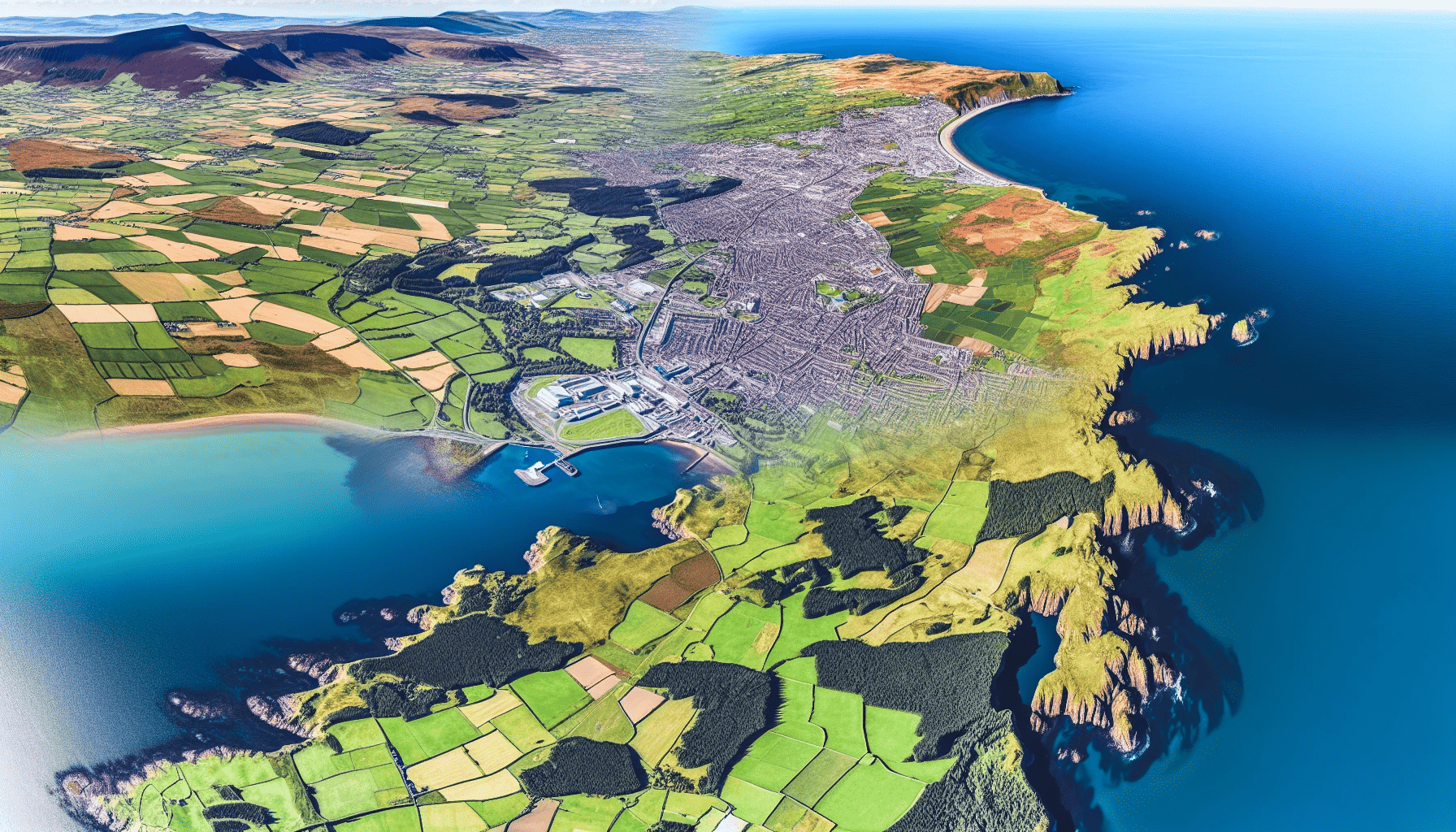
Northern Ireland and Ireland boast unique geographic features that differentiate them. The north, referring to Northern Ireland, is characterized by its distinct landscape and position on the island. The ensuing sections will discuss these differences, encompassing size, population, and the capitals of each territory.
Size and Population
Northern Ireland is smaller in size and population compared to Ireland, with approximately 1.8 million people compared to Ireland’s 4.8 million. The population density of Ireland is 344 persons per square mile, while that of Northern Ireland is 179 people per square mile.
Regarding the most populous cities, Belfast is the largest city in Northern Ireland, with a population of approximately 293,298. In contrast, Dublin is the largest city in Ireland, boasting a population of around 1.4 million.
Capitals: Belfast vs Dublin
Belfast is the capital of Northern Ireland. Dublin, on the other hand, is the capital of Ireland. Both cities are not only centers of political power but also hubs of culture, history, and economic activity.
In Belfast, primary historical landmarks include Titanic Belfast, Cavehill, Belfast City Hall, Belfast Castle, and St Anne’s Cathedral. In Dublin, landmarks such as St Patrick’s Cathedral, Dublin Castle, Trinity College, Kilmainham Gaol, and O’Connell Bridge attract tourists from around the world.
The economic activities in Belfast primarily consist of technology, life and health sciences, manufacturing, financial services, and aerospace engineering, while Dublin focuses on technology, finance, pharmaceuticals, tourism, and professional services.
Historical Context
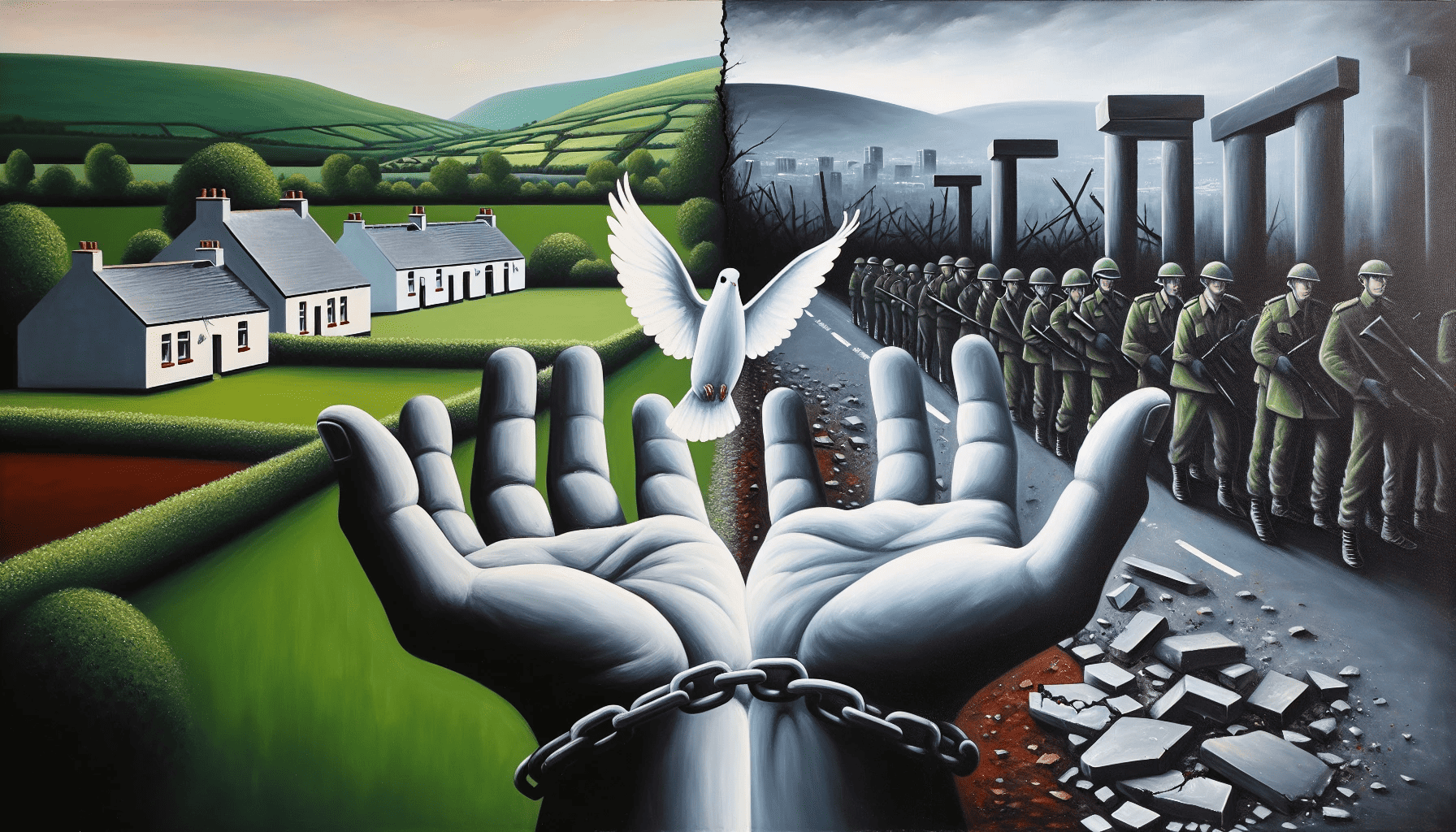
A comprehensive understanding of the differences between Northern Ireland and Ireland requires a grasp of their historical context. The movement for Irish Home Rule, which sought self-governance for Ireland within the United Kingdom through a series of bills and campaigns in the late 19th and early 20th centuries, served as a precursor to the eventual partition. The ensuing sections will elucidate the Partition of Ireland and the Troubles, two significant events marked by ongoing violence that have profoundly influenced the political and cultural landscapes of these territories.
The Partition of Ireland
The Partition of Ireland in 1921 led to the creation of Northern Ireland as a separate political entity within the United Kingdom. Before the full partition, there were attempts to establish separate home rule territories in the north and south, reflecting the division of Ireland into distinct regions with different political statuses. This division was a result of opposition to British rule by Irish nationalists, the Irish War of Independence, the Anglo-Irish Treaty, and the distinct views of Protestants in the northeast of Ireland.
Key figures involved in the Partition of Ireland included:
- Edward Carson
- James Craig
- David Lloyd George
- John Redmond
- Éamon De Valera
- Michael Collins
The partition led to the establishment of different political institutions and governments in both regions, exacerbating the sectarian divide and causing ongoing political tensions and conflicts.
The Troubles and the Good Friday Agreement
The Troubles, also known as the northern ireland conflict, were a 30-year conflict in Northern Ireland, primarily driven by long-standing religious and geopolitical disputes that intensified in the 1960s. Bloody Sunday was a pivotal event during the Troubles, significantly intensifying tensions and shaping the historical narrative of the conflict. This period of violence and unrest was brought to an end with the signing of the Good Friday Agreement in 1998.
The Good Friday Agreement:
- Established a power-sharing government
- Facilitated improved relations between Northern Ireland and Ireland
- Involved the international community in supporting peace processes, diplomatic efforts, and mediation
- Offered financial aid and assistance to help rebuild communities affected by the conflict
Education and Awareness
Promoting education and awareness is key to building a more harmonious relationship between Northern Ireland and the Republic of Ireland. The island’s history is marked by significant events such as the Easter Rising, the Irish War of Independence, and the creation of the Irish Free State through the Anglo-Irish Treaty. These milestones have shaped the identities and politics of both regions, making it essential for educational initiatives to provide a balanced and nuanced understanding of Irish history. Programs that encourage cultural exchange and historical awareness help bridge divides and foster cooperation between the two countries. By learning about the journey from the Free State to independence, and the complex relationship between Ireland and the Republic, people on both sides of the border can develop a deeper appreciation for their shared past and a more hopeful vision for the future of the island.
Community Development
Community development plays a vital role in strengthening ties between Northern Ireland and the Republic of Ireland. Grassroots initiatives and organizations have been instrumental in promoting cross-border cooperation in areas such as tourism, education, and economic development. The European Union’s PEACE program has provided crucial funding and support for projects aimed at reconciliation and community building, particularly in regions affected by historical conflict. Despite these positive steps, challenges such as sectarianism and the legacy of paramilitary activity persist, highlighting the need for ongoing efforts. The British government, the Irish government, and local communities must continue to work together, recognizing the island’s complex history and the importance of a collaborative approach. By investing in community development, Ireland and the Republic can foster greater understanding, resilience, and prosperity for all who call the island home.
Travel Considerations
Those planning to visit Northern Ireland and Ireland should consider travel aspects like border crossings and transportation differences. The subsequent sections will offer guidance on what to anticipate when traveling between these two territories. Residents of both regions may also want to understand how Irish citizenship affects their travel rights and legal status.
Border Crossings
Currently, there is no physical border between Northern Ireland and Ireland, allowing for seamless travel between the two territories. The border was established in 1921 under the United Kingdom’s Government of Ireland Act and became an international border upon the ratification of the Anglo-Irish Treaty in 1922.
The introduction of the Common Travel Area between Northern Ireland and Ireland has enabled passport-free and lawful travel between the two areas, granting Irish and UK citizens the privilege to:
- reside
- travel
- work
- study
within the Common Travel Area. However, there have been concerns about the impact of Brexit on Northern Ireland tourism and the potential hardening of the land border.
Transportation Differences
Differences in transportation between Northern Ireland and Ireland include road signs, speed limits, and units of measurement. In Northern Ireland, road signs are predominantly in English, while in Ireland, bilingual road signs displaying both English and Irish (Gaelic) languages are common.
Northern Ireland uses miles per hour for speed limits, while Ireland uses kilometers per hour. Visitors should be aware of these differences and make mental conversions between miles and kilometers to ensure they are driving in Ireland within legal limits and accurately estimating travel distances.
Summary
In conclusion, Northern Ireland and Ireland possess a complex tapestry of political, cultural, economic, and geographic distinctions that set them apart. Many of these distinctions and issues exist today, continuing to shape the identity and landscape of both regions. Understanding these differences allows for a deeper appreciation of the historical context, contemporary challenges, and the intricate relationship between these two territories. As you explore the beauty and history of this enchanting island, let the rich tapestry of both and Ireland captivate your senses and inspire your journey.
Frequently Asked Questions
What is the difference between Northern Ireland and Ireland?
The island of Ireland is divided into two separate countries – the Republic of Ireland, a sovereign nation, and Northern Ireland, which is part of the United Kingdom. The Republic of Ireland is independent while Northern Ireland is not.
Why are Ireland and Northern Ireland split?
The split between Ireland and Northern Ireland is the result of the 1920 formation of the new state, which only included six of the nine counties of Ulster. This ultimately led to the formation of the Irish Free State from the remaining three counties.
Is it better to visit Ireland or Northern Ireland?
With its double the destinations and amazing eating and drinking experiences, visiting Ireland is definitely the better option compared to Northern Ireland.
What is the primary language spoken in both Northern Ireland and Ireland?
English is the primary language spoken in both Northern Ireland and Ireland.
What are the capitals of Northern Ireland and Ireland?
The capital of Northern Ireland is Belfast, and the capital of Ireland is Dublin.

